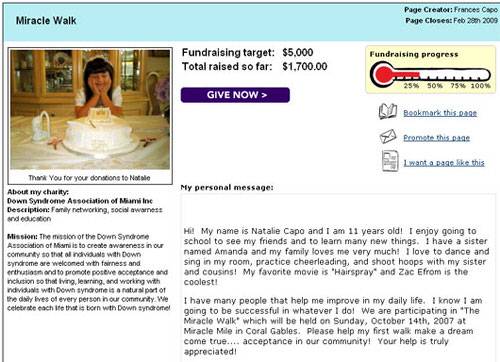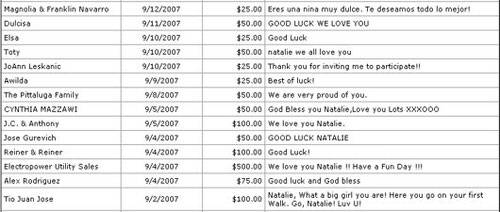Somerville, Massachusetts-based Firstgiving makes it simple for anyone to raise money for any accredited charity in the US. By providing donation and awareness tools to organizers, anyone can set up a fund drive in the name of their favorite charity. One of the most popular uses of Firstgiving is to use the site to raise money as part of a sporting event, such as a walk-a-thon.

For example, say you’re planning to walk barefoot across the state of Wisconsin to raise money for cancer research. With Firstgiving, you could set up a page that would let people donate directly to the American Cancer Society using a secure form, which might make it easier to convince people to give you money — since you never handle any of it and they can be certain of exactly where their money is going. Firstgiving makes it easy to raise money on your own as part of an organized event, or set up a page for an event/cause you come up with on your own.
Firstgiving has helped over 100,000 people raise $50 million for non-profit organizations since its inception. The site, which is a subsidiary of UK-based Giving, Ltd. (who operate a more-or-less identical site in Britain called Justgiving), was opened in the US in 2003. I’m told that the site houses anywhere from 15,000 to 20,000 active fundraising pages at any given time.

Firstgiving is easy to use. I set up a page for Read/WriteWeb (more on that later) to test the process. The first thing you do to set up a fundraising page is choose a charity. The site searches the GuideStar database, which lists every US-based non-profit organization (over 2 million of them) from large, international relief groups like the American Red Cross, to smaller groups, such as community hospitals or trusts.
Once you’ve selected your charity, you simply choose your fundraising target, closing date (helpful for fundraising initiatives aimed at a specific event), add a personalized message and upload a picture (if you want to jazz the page up a bit). You can then promote your fundraising effort via a flash widget or static graphics provided by Firstgiving, by email, or though their Facebook application.
Donations are collected using a secure server and Firstgiving accepts both Mastercard and Visa. Givers are able to leave a message with their donation. Firstgiving takes a 7.35% cut from donations to cover administrative costs (i.e., credit card fees, employee salaries, rent, servers, etc.).

I set up a page called Read/WriteWeb CAREs on Firstgiving to raise money for the Cooperative for Assistance and Relief Everywhere (CARE), which is one of the largest, international charities in the world devoted to fighting poverty (hopefully something we can all get behind!). I also picked CARE because they’re consistently one of the highest rated charities in terms of organizational efficiency. Setting up the page was a snap, and I had it running and ready to accept donations in less than 5 minutes.
Conclusion
Firstgiving is a great site that makes it simple for anyone to raise money for any non-profit organization (in the US, at least). By only dealing with accredited 501(c) organizations, and by acting as a trusted intermediary between the fundraiser and the non-profit, Firstgiving likely makes it easier for individuals to raise money. Who would you feel more comfortable giving to, a stranger knocking on your door asking for money for some organization, or a web site set up by that same stranger, working with an accredited non-profit and soliciting donations through an 8 year old company that has a track record of raising millions for non-profit groups?
Firstgiving tells me that their system works so well, some non-profits even use them for official fundraising activities.
Those of you looking to raise money for groups that don’t appear in the GuideStar directory, or for any other reason, may be interested in checking out ChipIn or Fundable, which work in a similar way to Firstgiving, but deposit money directly to the fundraiser, rather than to a non-profit organization.










